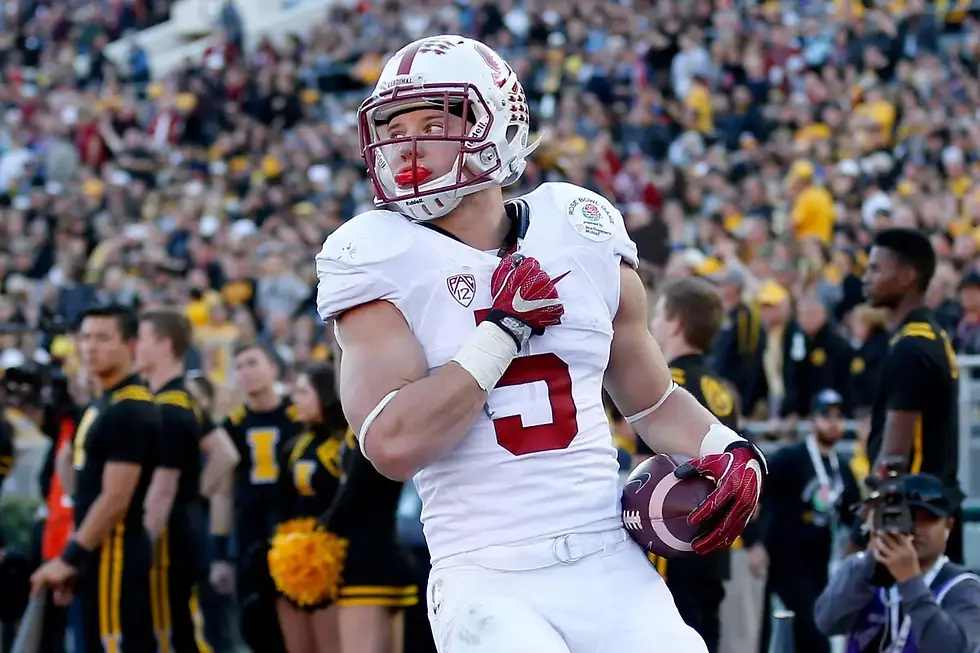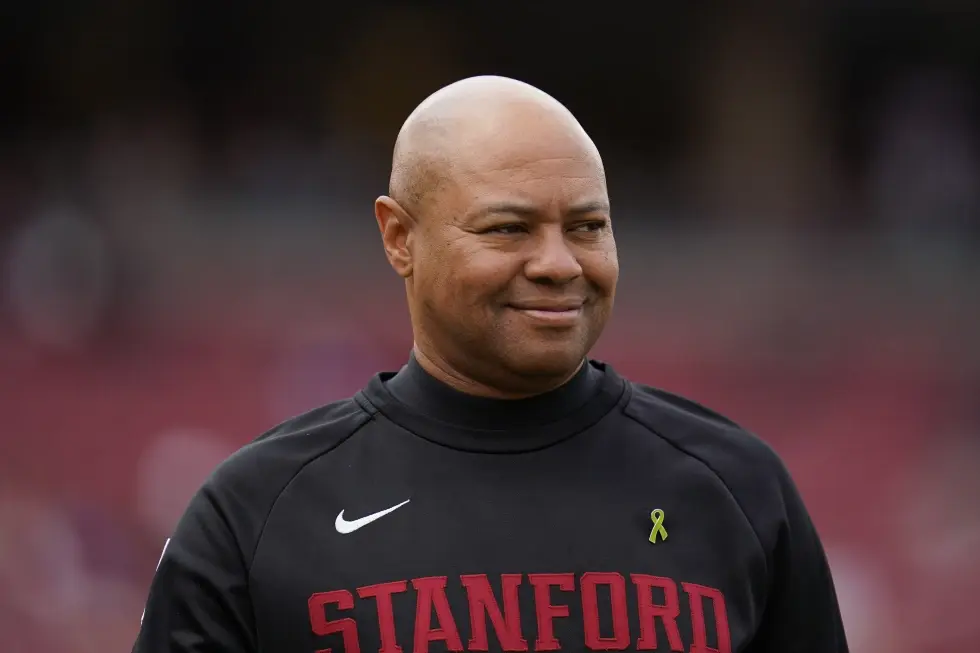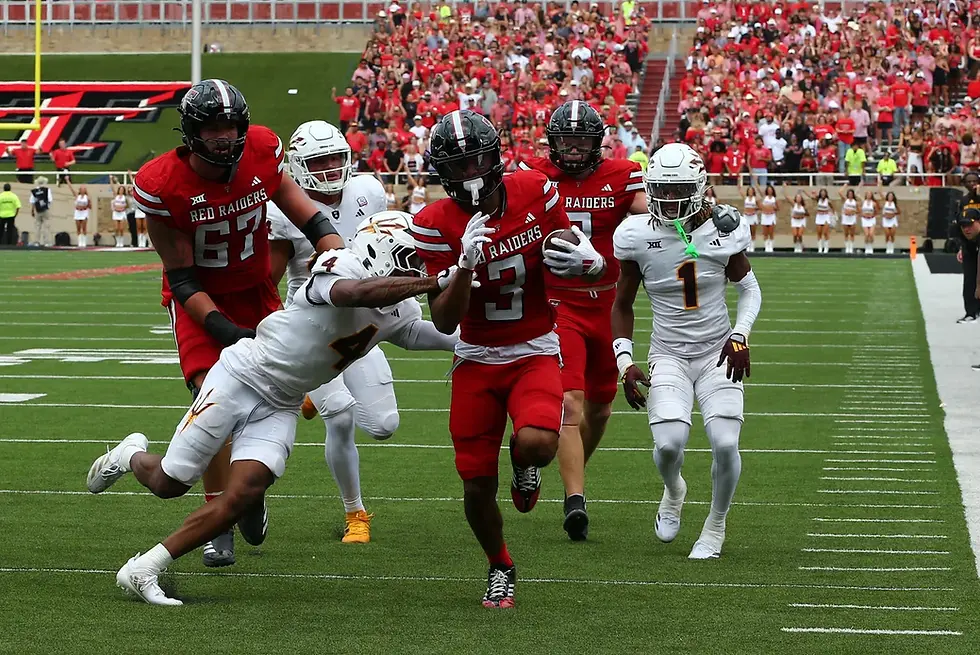Rise and Fall: The State of the Stanford Program
- Liam Donnan

- Apr 2
- 4 min read
Updated: May 27

Rise
A large percentage of younger college football fans have fond memories of a dominant Stanford Cardinal team, including a seamless transition from the Jim Harbaugh era, into Andrew Luck being one of the best quarterbacks in the nation, and finally the Christian McCaffrey led teams.

The program has been in a downward spiral since. Following their Sun Bowl victory at the end of the 2018 season, the Cardinal have failed to even reach a bowl game. They haven’t gone over four wins (in a full season) since 2019, and have put together four straight 3-9 seasons since 2021.

Stanford was never truly an elite team until Jim Harbaugh took the program from 4-8 to 12-1 in just four seasons. From 1941-2009, they had just one double-digit win season. There were some nice seasons in that span, including a pair of 9-3 seasons and Rose Bowl wins, featuring Heisman winning QB Jim Plunkett. The expectation for Stanford was never to field a national power in athletics, including football. The late 2000’s and much of the 2010’s were mostly an anomaly for the football team in its long history, leaving a young generation of fans coming to expect the level they once performed at.
Fall

What led to Stanford’s downfall? It very well could have been Jim Harbaugh leaving for the Sunday game, taking the 49ers job in 2011, but David Shaw was a great promotion, maintaining the standard – to an extent, for a few seasons following Harbaugh’s departure (albeit with many players from Harbaugh’s recruiting classes).
But David Shaw’s recruiting wasn’t the issue – his highest rated class was 7th overall in the nation, and averaged a rank of 25th in the nation from 2011-2021, higher than Harbaugh’s average (35th) (in a smaller sample size).
So, what was the real death of Stanford? To me, it is the nature of the school existing in the modern era of college football. Stanford is considered the “Ivy League school of the west”, meaning the academic standards are much higher than the schools it competed against in the Pac-12 (RIP). With that, the donors who contribute to the school are not exactly football or athletics focused. Having a weak NIL pool and very high academic standards is about as bad a recipe as you can have in the modern world of college football. This is especially true when you consider they are geographically squeezed between two of the biggest NIL giants in the sport in Oregon and USC, who not only recruit nationally, but recruit all areas of California better than anyone.
State of the Program
The high academic standards and poorly funded NIL efforts also essentially kill any chance of being a serious player in the transfer portal. Between 2023 and 2024 they totalled just nine transfer signees, and ranked 76th in the nation and 129th respectively.
Following his second straight 3-9 season, head coach David Shaw resigned in 2022. Shaw’s resignation brought in Troy Taylor, the former head coach of FCS Sacramento State. Troy Taylor was a long time offensive coordinator and QB coach, and sought to revitalize an offense that ranked 109th in the nation in scoring a season before his arrival. The offense stayed about the same under Taylor, finishing 112th in scoring in 2023, and 106th in 2024. The team continued to struggle as well, finishing 3-9 in both seasons under Troy Taylor.

Following the 2024 season, Stanford followed the national trend of hiring a general manager, in charge of player personnel, NIL efforts, and general football operations. They did not hire a NFL executive, an assistant athletic director, or a former athletic director. Their new GM is Andrew Luck, arguably the greatest Stanford Cardinal ever.

On the surface, it seems like a strange hire, but it may just be the perfect fit. Luck is young, passionate about the program, and uber-smart.
Andrew Luck quickly became the first college football general manager to fire a head coach, inheriting a dumpster fire. Investigations by Kate Weaver Patterson and Timothy O’Brien from separate, outside firms found that Taylor was abusive, discriminatory, hostile, and aggressive toward people within the program, including a female on the staff.
"After continued consideration it is evident to me that our program needs a reset" - General manager Andrew Luck
Following Troy Taylor’s firing, Andrew Luck hired Frank Reich as a stopgap option at head coach while Stanford conduct a search for the long-term answer. Reich was Andrew Luck’s head coach in his final season of his prematurely ended NFL career. There are plenty of options for Luck and Stanford to consider at head coach, but either way, the program is a mess.
The transfer portal situation is not good at all, and will need a serious step up in the NIL department to be a legitimate contender in that space. They will have to figure out their direction in the House V. NCAA settlement, a foregone conclusion to be passed, which would introduce revenue sharing to college athletics. The travel is brutal, being a California team in the Atlantic Athletic Conference, and the on-field results are very poor.





Comments